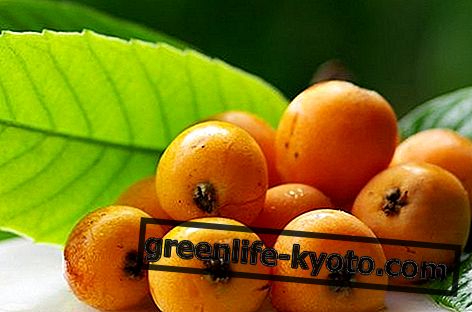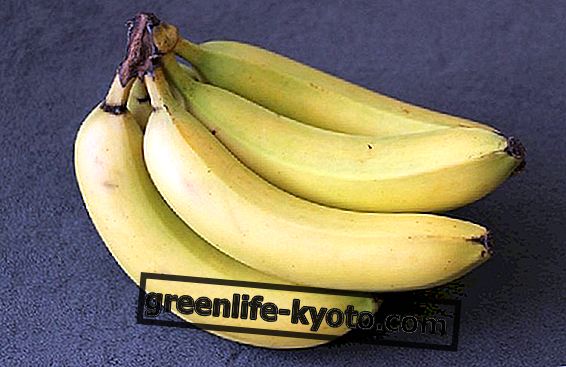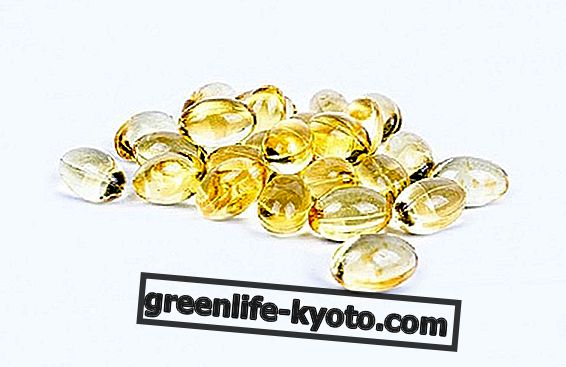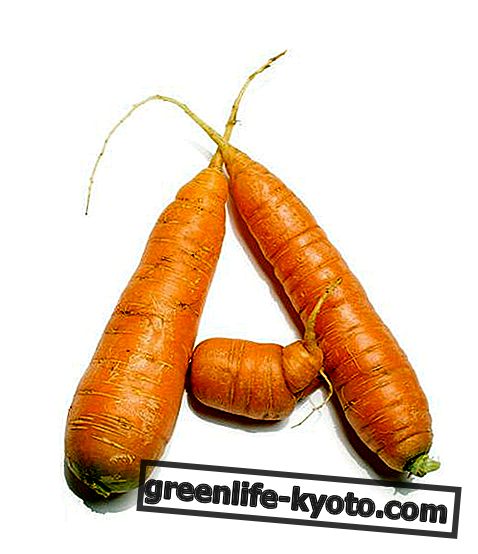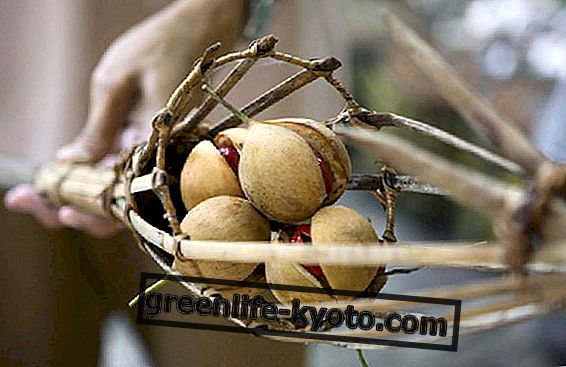
Just like this , plants have their senses because they can perceive light, recognize where the presence of water is, feel the humidity and even where there are small percentages of nutrients in the soil to be fed.
They can analyze the air and are sensitive to electromagnetic fields as well as being subjected to the influence of gravity. Plants are able to develop and grow to touch what is around them in the environment and they also know how to collect information from over 15 parameters useful for their growth and survival.
We can talk about vegetative sensitivity precisely because having to remain in one place, plants need to receive as much input as possible and signals from the outside in order to implement metabolic and behavioral modifications capable of guaranteeing their survival.
The view of plants
Man has visual perceptions because of the ability of his eyes and his pupil to receive light stimuli which, processed by the brain, form the image.
Of the visible spetro man can see are a small percentage of rays and is not able to perceive instead the ultraviolet and the infrared.
Plants, on the other hand, do not have pupils but are capable of intercepting and analyzing the quantity and quality of light and, of course, of using it through the most ancient plant mechanism: chlorophyll photosynthesis.
On the leaves there are particular structures called photoreceptors that have this specific function of "perceiving and seeing the light" and they are arranged on the whole leaf apparatus of the plant.
Thanks to their presence , plants can receive information about light and decide where to grow and develop their branches . All of us, looking at the trees, can recognize how plants look for the best position with respect to the light source and instead tend to avoid shadow and darkness.
Finally, plants are able to recognize day and night thanks to their ability to see night or daytime frequencies. In fact plants are able to recognize red or blue lightning flashes but also perceive infrared or ultraviolet light thanks to phytochromes and phototropins which are molecules capable of reacting to light.
This serves to measure the length of hours of the day and night and also decide in which direction to grow to have the right amount of light.
Hearing in plants
Plants have no ears like animals or humans but even here they have a widespread sense that takes in sound vibrations.
This auditory method is archaic and less sophisticated than human hearing but is quite similar to what worms in the earth or what the snakes feel through the ground may have.
Plants have in fact a sensitivity to telluric vibrations of earthquakes, thunderstorms, volcanic eruptions or the presence of a tornado or strong winds.
What they hear as a signal is transmitted through the water and the lymph in the various tissues, thus giving the plant the possibility of modifying the growth of the branches or delaying the blossoming of the flowers or of activating the sprouting of the seeds or even of modifying the growth of the roots.
Furthermore, the plants seem to be able to perceive the low frequencies between 100 and 400 Hz which man is not able to hear because he is out of his hearing range.
Smell in plants
Surely this is one of the most developed plant senses, in fact their sensitivity to volatile chemicals is quite fundamental to give and receive signals between the environment and the inside of the plant.
In fact, plants are capable of capturing information from the air and processing it to make decisions by implementing behaviors or changes in metabolism to give an effective response to the perceived stimulus.
The man and the animals have the nose as a specific organ used for the function of smelling while the plants possess cells spread on all the tissues of the plant, from the root to the leaves, which have the function of receptors of volatile substances.
In addition, plants are great communicators through the production and distribution of volatile substances in the air, just think of flowers and aromatic plants that release essential oils into the atmosphere around them.
These are real signals that give specific information . For example, they serve to indicate that the flower is ready for pollination or to communicate that this leaf is rich in essential oils and therefore cannot be edible for certain animals or that certain volatile substances still serve to declare the presence of the plant to other living beings in so that they do not settle in this area or grow too close to it.
Finally, plants can feel the presence of fire through diffuse smell and are even able to distinguish whether it is a danger near or far and how risky it is for their survival.
The sense of taste in plants
Plants have a sense of taste so that they are able to distinguish the different nutrients in the soil, their quantity even if small and even their availability even at a distance of several meters from their roots.
The choice of the best water for the plant is also given by the development of a sense of taste .
In fact, in an experiment where a plant is placed at an equal distance between a pure source water and another tap water, the vegetable responds starting to grow towards the most natural source of water, thus making a real choice according to the "gustatory" signals perceived at a distance.
If we think of carnivorous plants that have developed special mechanisms to trap prey and digest them with specific chemicals, then the sense of taste is certainly involved.
These plants found no nutrients in the soil in which they grew and evolved creating these sophisticated survival systems. In the experimental tests it has been noticed that the carnivorous plants have preferences and therefore food tastes towards the insects that hunt. In fact they prefer prey such as spiders, aphids and butterflies with greater sugary quantities in the body.
The sense of touch in plants
Plants also have a sense of touch so that during their growth they can perceive and explore an object near them, deciding how to behave accordingly to what they have touched.
For example, climbing plants have this highly developed sense of plant feel and grow towards objects that can act as a support, continuing to touch them and explore them until they can decide if it is a suitable object to hold onto and grow on.
Furthermore, plants recognize the touch of an animal or insect and distinguish whether it is a harmful or beneficial signal to their life.
They even remember these inputs that remain in memory until the next contact with the same insect that awakens the same response adapted to the context.
For example, if the insect is a herbivore that eats the leaves of the vegetable, this is activated by producing metabolic substances with an unpleasant or toxic taste for the insect.
At the second contact with the same insect the plant remembers that particular touch and recognizes the insect by implementing the best response it has in memory and in the shortest possible time, becoming more and more effective in self-defense.
The sense of touch in plants occurs through the diffusion in the water of the plant tissues of the tactile signal perceived somewhere in the plant. Also in this case the sense of touch is widespread and it is the whole plant that perceives a tactile signal.
This is not so different from what happens in man because of the sense of touch, in fact on our skin we feel the external inputs and in the same way the stimuli of what is touched are felt on the cortex, on the leaves and in the radical tissues of the plant. .
In conclusion we can say that there is a real vegetal sensitivity with perceptual senses spread in all parts of the plant .
Thanks to the reception of all these signals, the plants implement changes and choices, thus showing that they have decision-making skills, memory and a certain form of plant intelligence.
To learn more about these sensory abilities, a new science was also born: plant neurobiology .
In fact, getting to discover that plants have 5 or more perceptive senses will surely help man to see the plant kingdom under a new vision.
We hope that more and more people will be able to feel vegetables as companions of life and of a journey in which they too are recognized in all respects as sensitive living beings.
